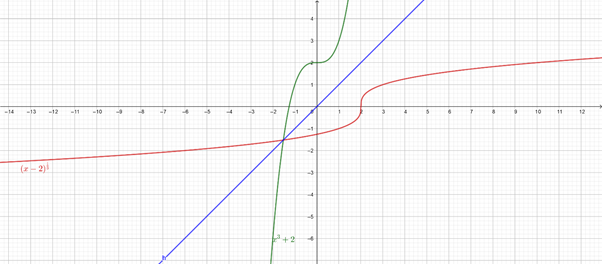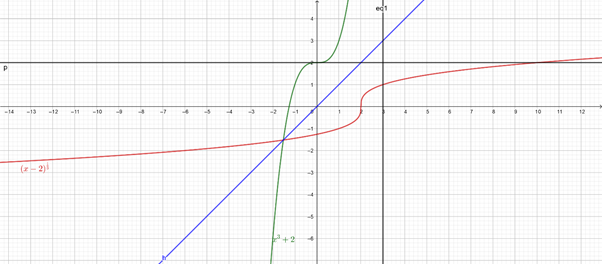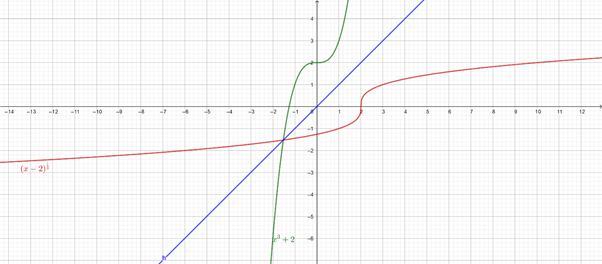
Concept explainers
(a)
To find: The inverse of the function
The inverse of the function is continuous.
Given information
| If a one-to-one function is continuous in its domain, then its inverse function is also continuous. |
We can prove it by an example let

It can be seen that both f(x) and g(x) are continuous. The graph of
(b)
To find: The inverse of the function
The inverse of the function is is one one.
Given information
We can prove it by an example let

The inverse of the function passes the vertical and horizontal line test so it is one − one.
(c)
To find: The inverse of the function
The inverse of the function is odd.
Given information
| If a one-to-one function is continuous in its domain, then its inverse function is also continuous. |
We can prove it by an example let

As it is clear from the graph that inverse of f(x) is symmetrical about the origin and it is odd therefore
(d)
To find: The inverse of the function
The inverse of the function is increasing.
Given information
| If a one-to-one function is continuous in its domain, then its inverse function is also continuous. |
We can prove it by an example let
It is clear from the graph for
Hence
Chapter 1 Solutions
PRECALCULUS:...COMMON CORE ED.-W/ACCESS
 Calculus: Early TranscendentalsCalculusISBN:9781285741550Author:James StewartPublisher:Cengage Learning
Calculus: Early TranscendentalsCalculusISBN:9781285741550Author:James StewartPublisher:Cengage Learning Thomas' Calculus (14th Edition)CalculusISBN:9780134438986Author:Joel R. Hass, Christopher E. Heil, Maurice D. WeirPublisher:PEARSON
Thomas' Calculus (14th Edition)CalculusISBN:9780134438986Author:Joel R. Hass, Christopher E. Heil, Maurice D. WeirPublisher:PEARSON Calculus: Early Transcendentals (3rd Edition)CalculusISBN:9780134763644Author:William L. Briggs, Lyle Cochran, Bernard Gillett, Eric SchulzPublisher:PEARSON
Calculus: Early Transcendentals (3rd Edition)CalculusISBN:9780134763644Author:William L. Briggs, Lyle Cochran, Bernard Gillett, Eric SchulzPublisher:PEARSON Calculus: Early TranscendentalsCalculusISBN:9781319050740Author:Jon Rogawski, Colin Adams, Robert FranzosaPublisher:W. H. Freeman
Calculus: Early TranscendentalsCalculusISBN:9781319050740Author:Jon Rogawski, Colin Adams, Robert FranzosaPublisher:W. H. Freeman
 Calculus: Early Transcendental FunctionsCalculusISBN:9781337552516Author:Ron Larson, Bruce H. EdwardsPublisher:Cengage Learning
Calculus: Early Transcendental FunctionsCalculusISBN:9781337552516Author:Ron Larson, Bruce H. EdwardsPublisher:Cengage Learning





